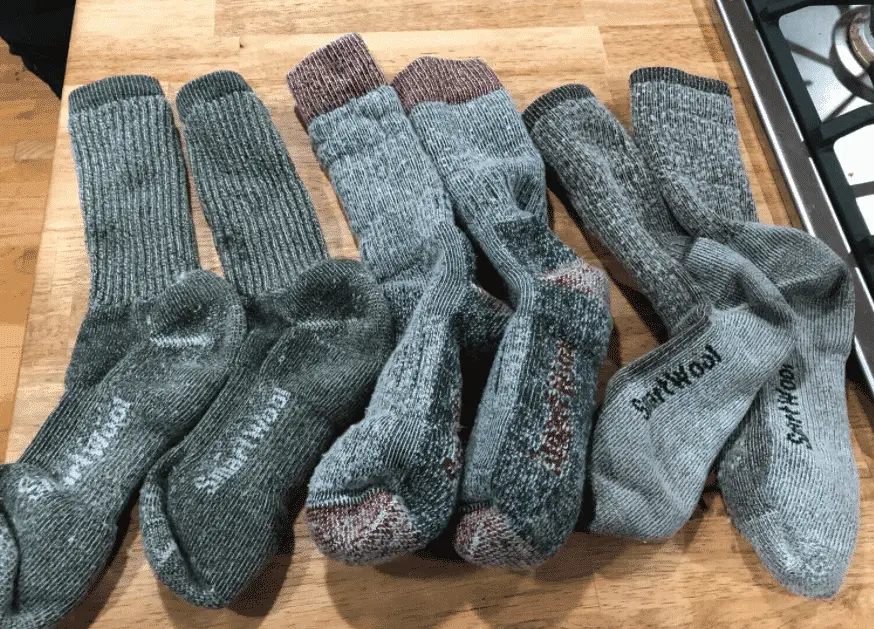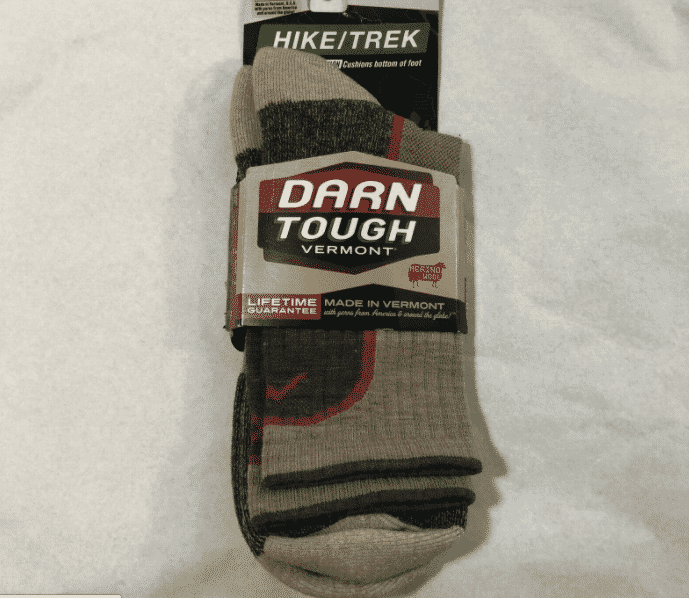With fears of blisters popping into their heads, hikers go to great lengths to keep their socks dry. Merino wool socks might be the best hiking socks money can buy, but they won’t stay dry forever. It doesn’t matter how hard you try, your socks will eventually get wet. That brings to mind one very important question.
Do Merino Wool Socks Dry Quickly? Yes, Merino wool socks dry quickly. Merino wool is by far the best sock material for hiking and backpacking in wet conditions. They remain comfortable when wet and dry fast with the right hiking shoes.
Merino wool is the king of moisture-wicking socks. There’s just no comparing the moisture-wicking properties of merino wool to synthetic and cotton blends. Merino wool socks are by far the best choice for hikers.
Synthetic socks might dry a little bit faster, but merino wool stays comfortable when wet. It might take 5 minutes longer for your socks to dry, but they’re so much more comfortable. Continue reading this article for more information on keeping your merino wool socks dry.
My Favorite Merino Wool Hiking Socks
- Darn Tough Merino Wool Socks: Darn Tough merino wool socks are by far the best hiking socks I’ve tried. They’re extremely comfortable, dry fast, and last forever. The only downside to these socks is the price.
- Smartwool Socks: Smartwool socks are a little bit cheaper than Darn Tough socks, but they don’t have the same durability. They are just a little bit fluffier than cheaper alternatives, but that cuts down the durability. You can extend the life of Smartwool socks by using them as a liner under fast-drying synthetic blends.
- People Socks (Budget Option): People socks are a surprisingly durable budget option that works really well. You will once again have durability issues on long multi-day trips, but they work well as a liner under durable synthetic socks. You really can’t beat these merino wool socks for the price.
How Long Does It Take To Dry Merino Wool Socks?

Sometimes you just can’t avoid water on the trail. There’s been days where I’ve had to cross 30-40 streams. It doesn’t matter what kind of sock you have on they will never dry completely.
However, a typical hike doesn’t require constant stream crossings and heavy rain. With well-ventilated shoes, merino wool socks should dry fast. After walking through a stream, it usually takes 20-30 minutes for my socks and trail runners to get 90% dry. Here’s what I do to speed up the process.
- Take off my wet socks after going through water. I usually take a short water break and let my feet air out for a few minutes.
- Wring the excess water out of your socks. You’re just trying to get out all the excess water. They don’t have to be perfectly dry before putting them back on. It doesn’t matter if your socks are wet or dry, merino wool shouldn’t cause blisters.
- Put on a hydrophobic coating like Desitin or Foot Glide. I think Desitin works better, but foot glide is much easier to apply. This will help soften up your skin while repelling moisture. It allows your feet to breath so you won’t have to deal with uncomfortable pruny, white feet. These products really help prevent trench foot on long backpacking trips.
- At this point, you have two options depending on how many pairs of socks you brought. Either put the socks back on and let them dry as you walk or strap them to the back of your pack so they can dry in the sun. You might want to keep 2-3 pairs of socks on rotation. Since merino wool has anti-microbial properties you don’t have to worry about that mold and mildew smell.
- Hopefully, you have on hiking shoes that allow some ventilation. You just won’t be able to dry socks in waterproof boots. There’s just nowhere for the water to go. Waterproof hiking boots are better at trapping water than keeping it out. I recommend a nice pair of Salomon or Merrell trail runners. The mesh uppers allow your feet to breathe so everything dries out quickly.
- After about 20-30 minutes your shoes/socks should be more or less dry. They should remain that way until they get submerged again. Repeat the process
Bring 2-3 Extra Pairs of Socks
It doesn’t matter how long the backpacking trip is, I usually bring 2-3 extra pairs of socks. This allows me to rotate them so that I constantly have a dry pair of socks to put on.
If it’s really rainy you’ll have to adapt to the wet conditions. Wet feet are just part of the game. Chances are your shoes/socks will be wet in the morning and remain that way all day long.
So there’s no point in switching them out all day long. You just have to suck it up, air your feet when you can and learn to live with it.
On warm dry days I will try to rotate my socks so I always have a fresh pair. I make sure to save 1 pair of dry socks to wear to bed and rotate the other 2 throughout the day.
Clip the socks to the back of your pack on the trail and hang them up inside/outside your tent overnight. They might not get perfectly dry, but they won’t be bad. Wearing damp merino wool socks really isn’t that bad anyway.
Choosing Hiking Shoes For Wet Conditions
You can’t expect your socks to dry if there’s no where for the water to go. Waterproof hiking shoes barely keep water out, but they do a great job of keeping it in.
It might sound counterintuitive, but instead of waterproof shoes, buy something that’s light and well ventilated. I personally prefer Salomon or Merrell trail runners, but you can wear any pair of mesh running shoes.
The main advantage to trail runners is the thin foam pad that isn’t thick enough to trap moisture. Look for lightweight shoes, with flexible soles and breathable mesh uppers. They might not keep your feet perfectly dry, but they will allow your socks to dry fast.
I have a few friends that like to hike in sandals, but I can’t get them to work. They end up rubbing, I stub my toes, and sticks/pebbles get lodged into the sole. Hopefully you have better luck than me.
Don’t Bother With Water Shoes
When I first started backpacking I carried an extra pair of water shoes that I put on every time I needed to cross a stream. It was a massive hassle and really didn’t help matters.
My feet still got wet and it took 5 minutes everytime I needed to get them on and take them off. Eventually, I just started wearing my regular trail shoes in and not dealing with the water shoes.
I was surprised to find out that my water shoes didn’t dry significantly faster than trail runners. Plus I couldn’t find a pair with the same kind of traction as my trail runners. Less slipping and sliding means less injuries and dry gear.




